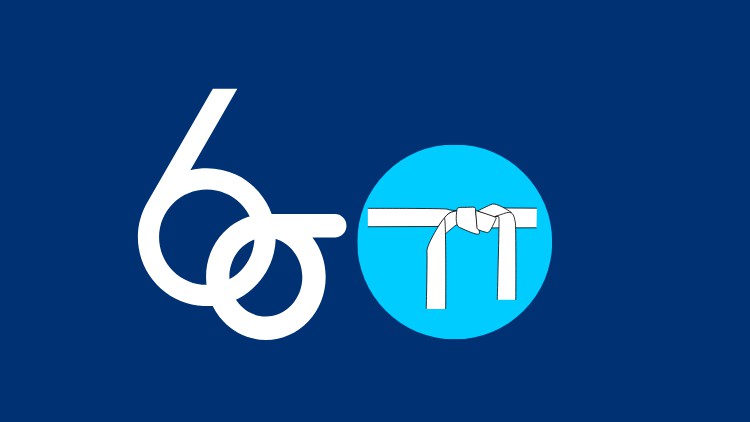Lean Six Sigma is an extremely powerful methodology, capable of saving organisations vast amounts of money and time. Having the skills, knowledge and understanding given by Lean Six Sigma is increasingly important in todays workplace. Organisations want their employees and consultants to know how to make processes more efficient, how to increase the quality of products and how to save time and money that can ultimately be reinvested back into the organisation.
This White Belt course will introduce you to the world of Lean Six Sigma. In this course we will cover:
– Quality. What quality is, its importance and delivery options.
– Quality Toolkit. We explore the key tools on offer to ensure quality and operational excellence.
– Lean. What is Lean, its history, the 8 key wastes, value adding and non-value adding steps, how to create value within your process and more.
– Six Sigma. What is Six Sigma, its history, good quality vs. Six Sigma quality, the project management approach of DMAIC, roles and more.
– The customer. Looking at the voice of the customer and establishing what is critical to quality.
– Exam. As well as tools and other resources, an exam and certificate of completion is offered at the end of this course.
Once you have completed this course, you will be able to start the important work of instilling quality and operational excellence within your organisation / clients. This skill is now in high demand as organisations look to stay competitive in todays market, so delivering savings and efficiencies on a large scale will set you apart from the crowd.
Quality
Lean
-
3Let's set the scene
In this video we will set the scene for quality by looking at the types of people we can have in an organisation.
-
4What is quality?
In this video we will look at how we define quality.
-
5Why a focus on quality is important
In this video we will look at why focusing on quality within an organisation is important.
-
6The 7 tools of quality - introduction
In this video we will introduce the 7 Basic Tools of Quality, to be explored later in the course.
Six Sigma
-
7What is Lean?
In this video we will look at what Lean is.
-
8History of Lean
In this video we will look at the history of Lean, its origins and evolvement.
-
9The 8 Wastes
In this video we will look at a high level introduction to the 8 wastes within Lean.
-
10Defects
In this video we will look at the Defects waste.
-
11Overproduction
In this video we will look at the Overproduction waste.
-
12Waiting
In this video we will look at the Waiting waste.
-
13Non-utilised talent
In this video we will look at the Non-utilised talent waste.
-
14Transport
In this video we will look at the Transport waste.
-
15Inventory
In this video we will look at the Inventory waste.
-
16Motion
In this video we will look at the Motion waste.
-
17Extra-processing
In this video we will look at the Extra-processing waste.
-
18Identify waste in your world!
-
19VA vs. NVA
In this video we will look at the difference between those process steps that add value and those that do not.
-
20Creating value
In this video we will look at creating value within a process.
-
21Process
In this video we will look at the role of Process in Lean.
-
22Section quiz
We will explore 5 questions to see how well you have engaged with the content.
The customer
-
23What is Six Sigma?
In this video we will look at what Six Sigma is.
-
24History of Six Sigma
In this video we will look at the origins and history of Six Sigma.
-
25Good quality vs. Six Sigma quality
In this video we will look at the difference between traditional versions of quality and Six Sigma quality.
-
26DMAIC
In this video we will breakdown the Six Sigma methodology of DMAIC - Define, Measure, Analyse, Improve, Control.
-
27Belts & roles
In this video we will look at the roles and belt types available in Six Sigma.
-
28Six Sigma in action
In this video we will look at a demonstration of how Six Sigma can be practically applied.
-
29Section quiz
We will explore 5 questions to see how well you have engaged with the content.
The tools of quality
Close out
-
32The 7 tools of quality - a high level reminder
In this video, we will look at a high level reminder of the 7 tools as introduced earlier on in the course.
-
33Process Map
In this video we will investigate the tool of Process Map.
-
34Check Sheet
In this video we will investigate the tool of Check Sheet.
-
35Histogram
In this video we will investigate the tool of Histogram.
-
36Pareto Chart
In this video we will investigate the tool of Histogram.
-
37Fishbone Diagram
In this video we will investigate the tool of Fishbone Diagram.
-
385 Whys
In this video we will investigate the tool of 5 Whys.
-
39Run Chart
In this video we will investigate the tool of Run Chart.
-
40Section quiz
We will explore 5 questions to see how well you have engaged with the content.


